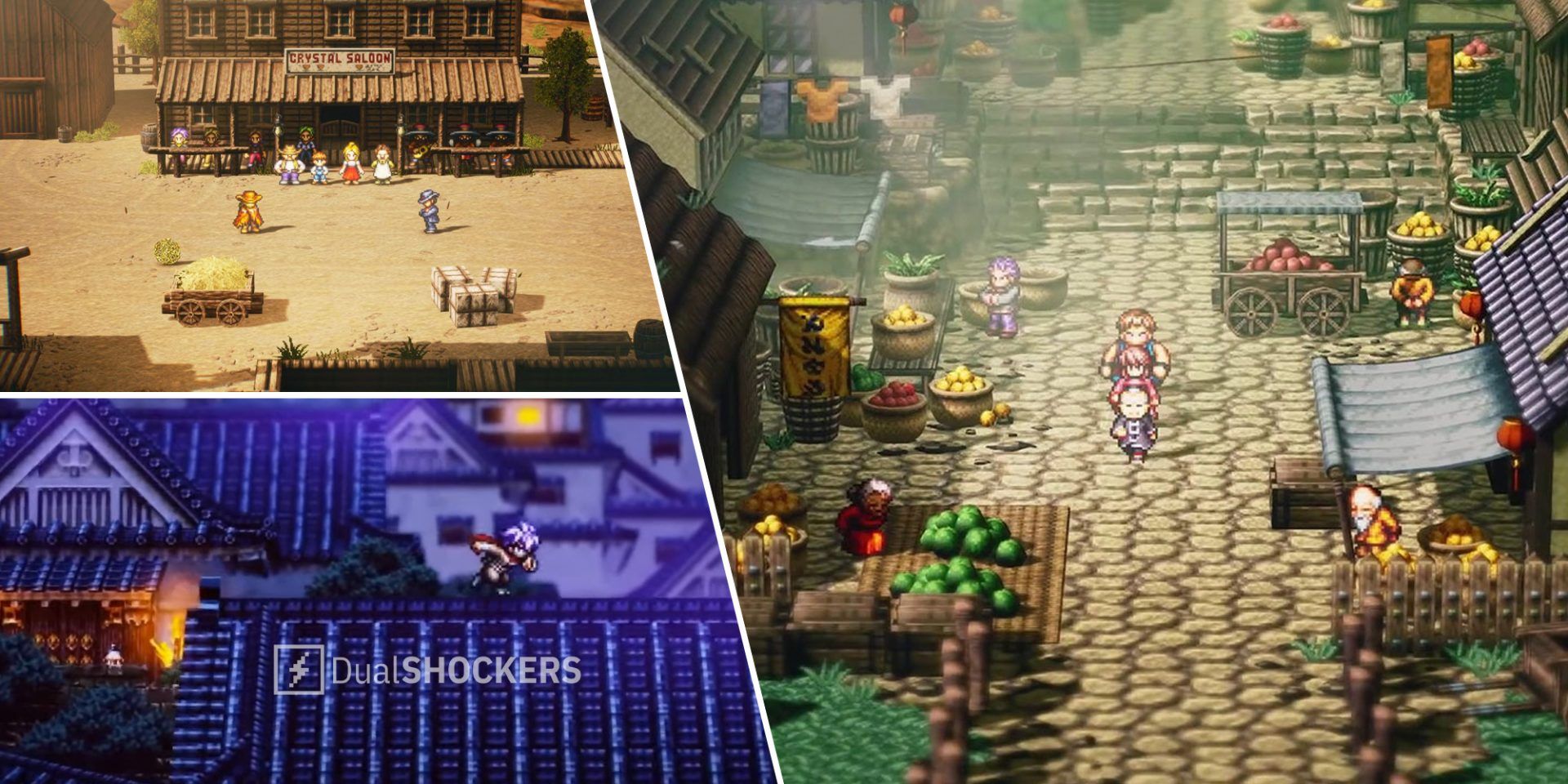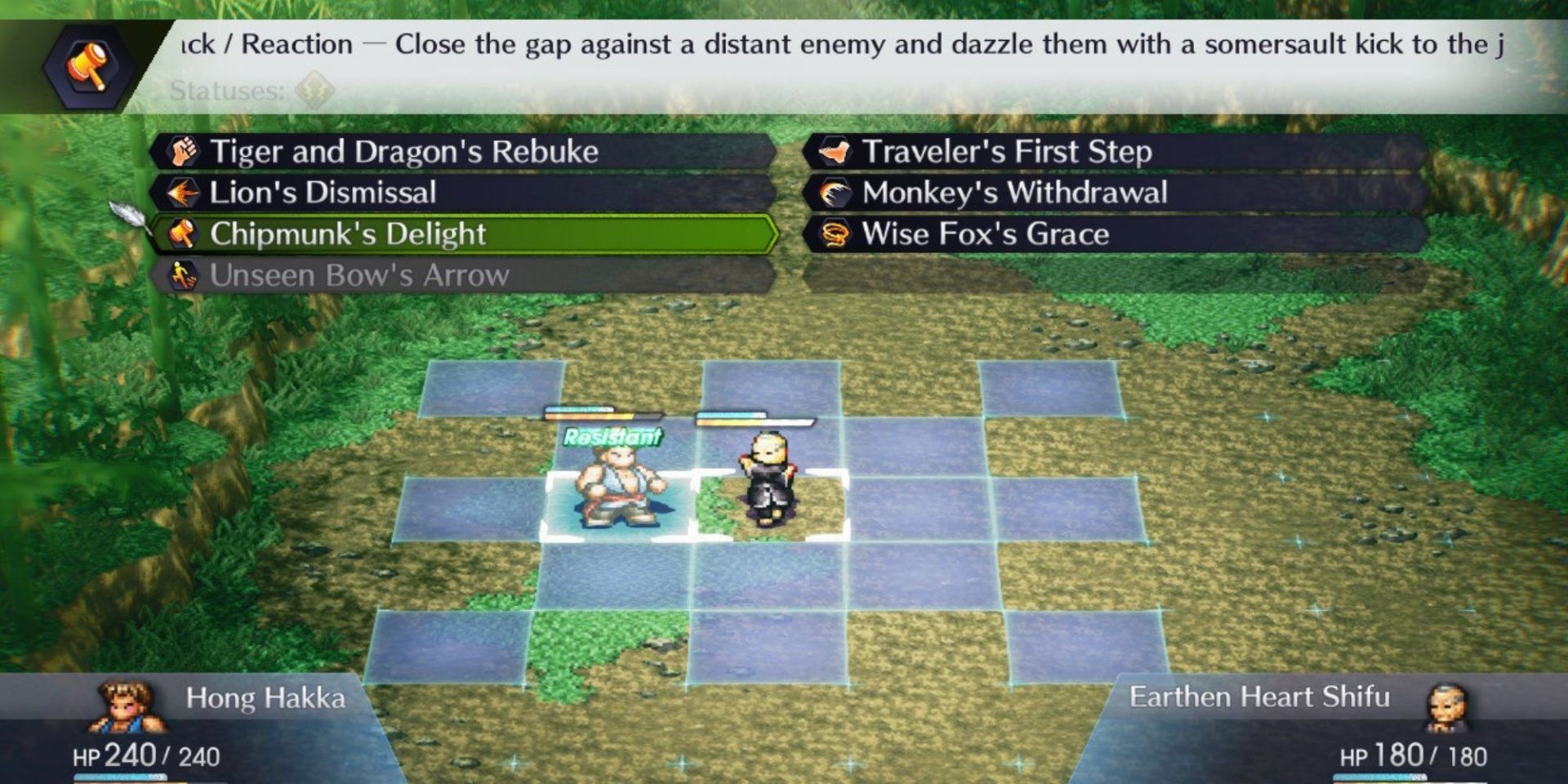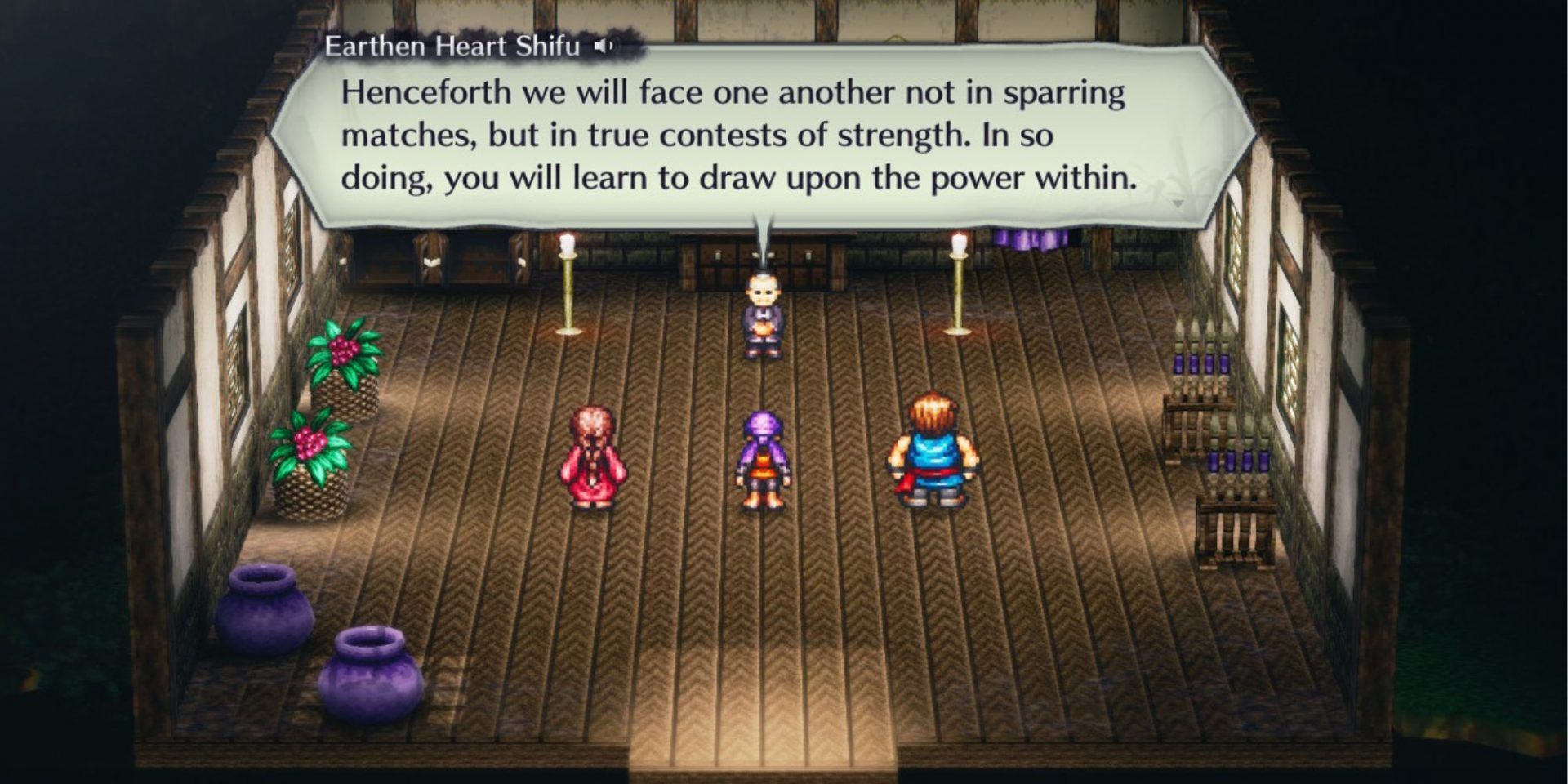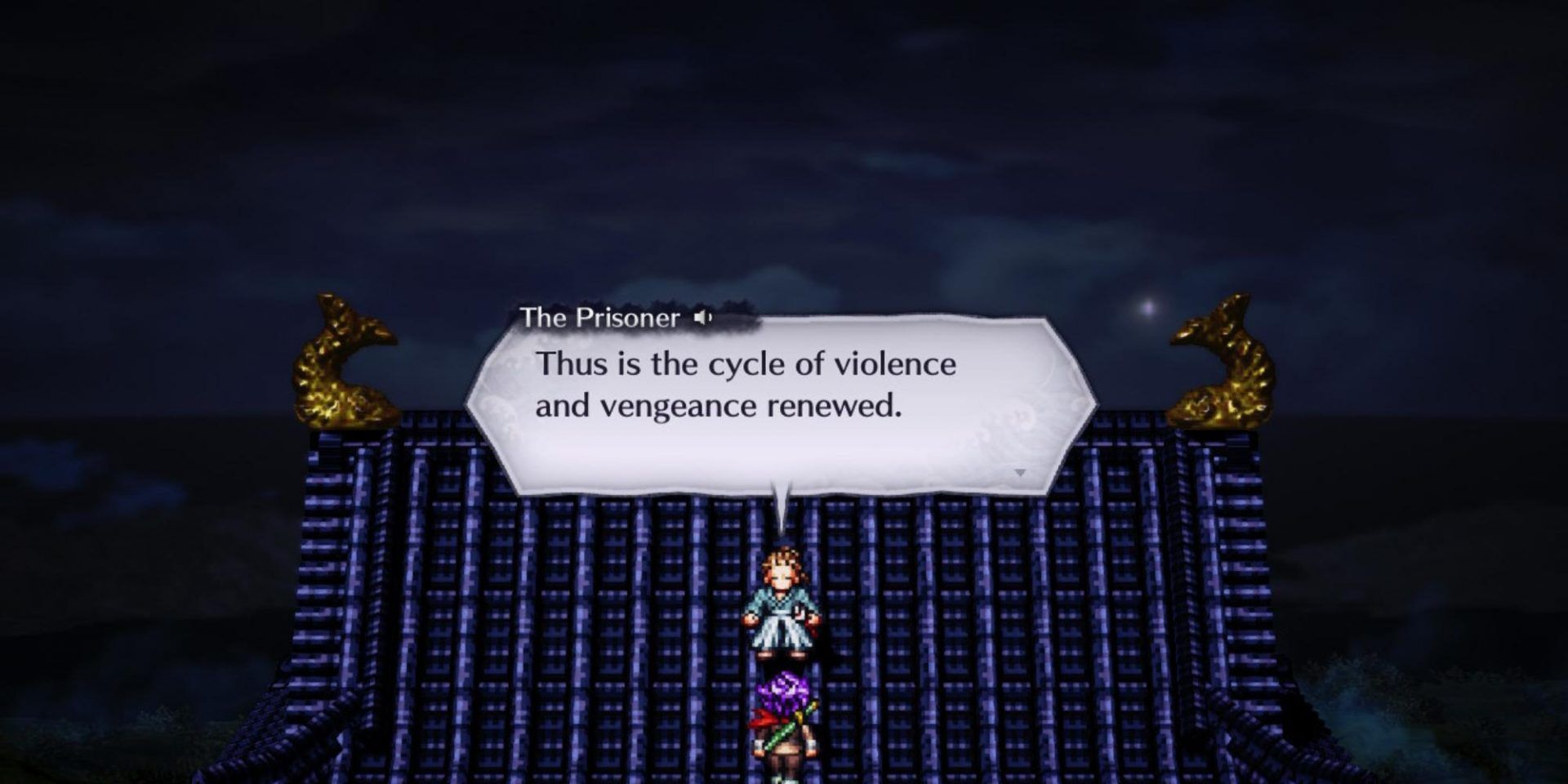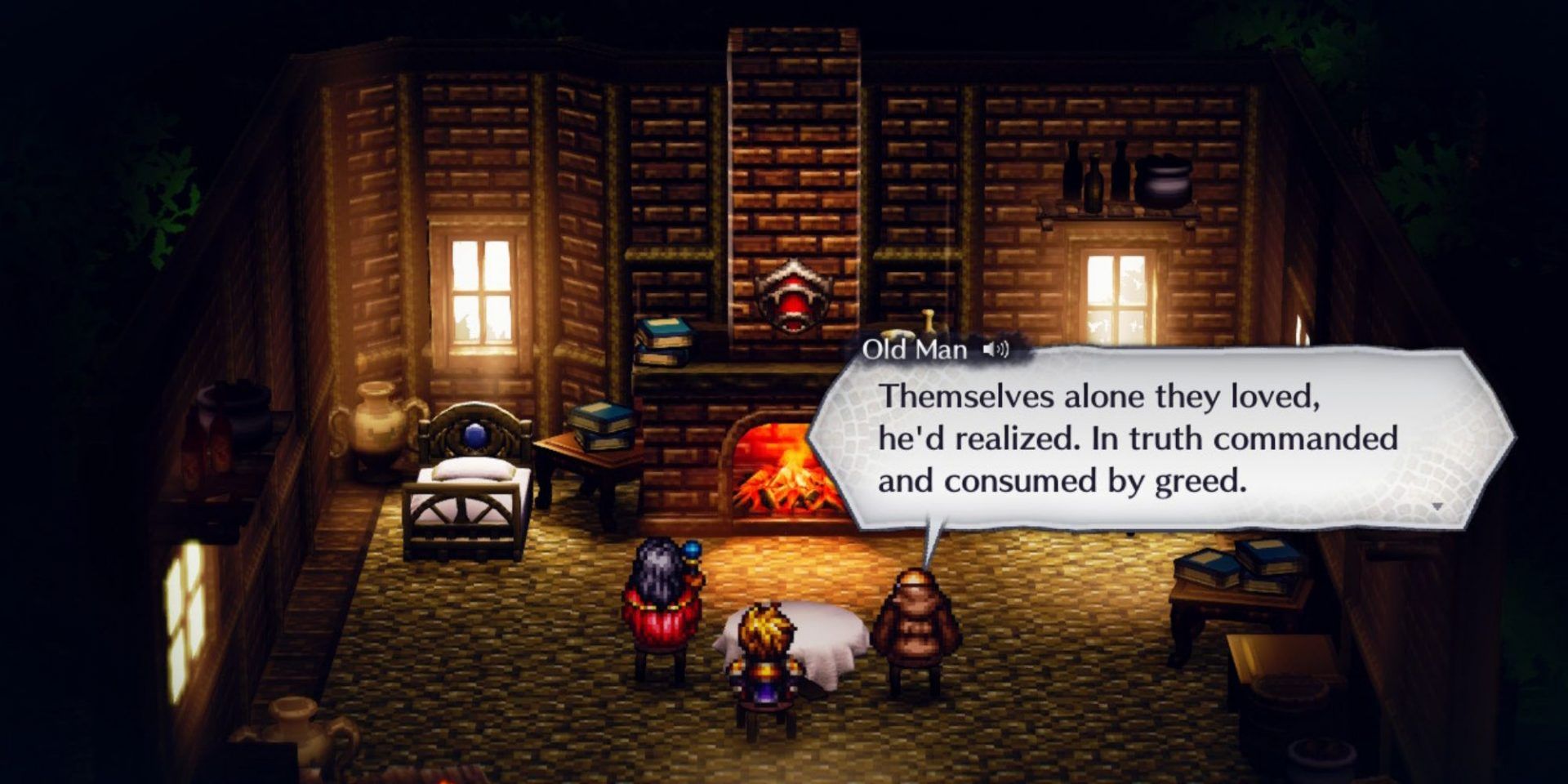|
Our Score |
8/10 |
|
The Good |
An impressive variety of stories, characters, and play styles |
|
The Bad |
Some design elements didn't age well. Battle system doesn't present many challenges. |
|
Release Date |
July 22, 2022 |
|
Developed By |
Square Enix, Nintendo |
|
Available On |
|
|
Reviewed On |
Nintendo Switch |
Live A Live is not a story of heroes in the name of idealism, but a tale of ordinary people who value something different, even more important. The game can be considered an anthology, an amalgamation of eight different stories that appear distinct at first glance - in characters, themes and even genres - but are all connected by subtle threads and a main motif: ending the cycle of vengeance that might have spurred indirectly from the types of heroic stories that are so often the topic of classic JRPGs and fairy tales.
Live A Live was released for the first time on the Super Famicom in 1994, exclusively for Japan. The development involved a separate artist for every story chapter, music by Yoko Shimomura (Kingdom Hearts, Xenoblade), and was directed by Takashi Tokita, who later worked on Chrono Trigger. It was a dream collaboration of the sort we haven’t seen since, and a game extremely deserving of a modern reincarnation.
The game has received a complete makeover with the HD-2D remake technology, which has extensively retouched all landscapes and locations, and implemented creative camera work in every corner to capture the atmosphere that the game has originally wanted to convey. Live A Live has also received complete voice acting in Japanese and English, so you can play it all in English or in Japanese with English Subtitles.
The protagonists of the eight stories are not related to each other, nor are their stories intertwined in any way. They live in different eras, pursue different things, their worlds are presented with entirely different gameplay gimmicks, and the scenarios have different lengths (1-4 hours).
Nevertheless, these segregated worlds shine in how their individual elements resonate with each other. Usually in JRPGs, you are bound by a single predetermined skill tree that will help you unlock skills as long as you level up. You don’t get to know where these skills came from, and you probably will forget most of their names by the end of the game.
In Live A Live, you are constantly involved in the process of building up your character, both physically and mentally, as the character stats and skills they end up with in the final dungeon, depend on your choices throughout the individual chapters. The final chapter is an end game where all the main characters fight together against the final true enemy.
The Imperial China era for starters allows you to do that through assuming assume the role of a nameless Chinese Martial Arts Master (Shifu in Chinese), as he completes his task of ending the cycle of vengeance through teaching his three disciples to forsake anger, gluttony and immaturity, and learn the skills and worldview he has cultivated through the years.
In the Present Era, you control Martial Artist Masaru Takahara, who fights six boss battles in a story arc presented like a fighting game tournament. Masaru’s fight is also an internal one, as he is not only growing in strength, but also conflicted about whether letting his opponents live will truly end the grudge they have from being defeated by him.
Live A Live’s grid-based battle screen and active time battle meter ask the player to focus more on strategy than grinding. Skills do not consume energy, but they require time to cast, and each has specific range boxes that will make constant movement a necessity, in addition to assessing enemy vulnerabilities, and dealing with buffs/debuffs and detrimental effects.
Most fights use an element-based system – Fire, Wind, Ice and other elements - to expose enemy weaknesses. Players will have to position themselves in appropriate places to avoid enemy attacks, and retreat when necessary to heal. This aspect of the game isn’t very hard, and many battles have secret tricks or gimmicks that allow players to finish them quickly in a couple of hits or even less.
There is a margin of accessibility if you want to make story chapters easier or harder on yourself. In the Wild West era, you play as the Clint Eastwood-inspired protagonist Kid, who can help the townspeople overcome their own fear and cowardliness. You can help end the cycle by encouraging the locals to set straps to reduce the number of raiding enemies and defend their town, or you can just not bother with the traps and fight them all by yourself.
Another strategy can be found in the Twilight of Edo Japan era, where you are Oboromaru, a Ninja warrior who is loyal to a fault. He is ready to go to any length to finish his mission of saving the historical figure Sakamoto Ryōma, who had a significant role in ending wars and feudalism in Japanese history. Slaughtering everyone in your way or evading most combat encounters via stealth are both viable options here. The game isn’t very clear about how to take the pacifist route, or the consequences for having a high kill count, but it certainly makes you more wary of your actions.
All of the chapters in Live A Live offer distinct and varied ways to learn, interact and connect with the elements of a given chapter: learning from your allies and enemies, laying out traps or defusing them, or choosing one of multiple paths through the story. In the prehistory chapter, you will also have to understand what the story wants to convey without words, only gestures, since the protagonist pogo and the cast haven’t learned any languages yet.
The remake helped make the characters in this chapter more expressive and the message more clear than ever before, because the SNES technical limits and old characters' sprites couldn’t really express what were the characters saying and feeling at any given moment. The new remake added more charm, sound effects and hand gestures to further clarify the scenes and how the characters feel about each other.
The variety of the stories is incredible. That you can go from a pre-history in which no one could speak, to a Near Future where you can read minds and ride super robots in the spirit of late 90s Japanese Sentai shows, to a Distant Future where you fight mythical monsters in a spaceship (with a dodgy AI) makes for one of the most eclectic JRPG adventures of all time.
The writing style and dialogue is unique in each chapter, correlating to how the characters would speak in that time period. The poetic choice of words in the Middle Ages chapter, and the old western Lingo in the Wild West chapter were the most impressive in that respect.
The wide variety of musical compositions encompassing all eight eras is mesmerising, and even the creeping silence in some eras like the distant future, is done effectively, relying on the lack of music to elevate the horror. Several of the stories offer interesting takes on both the good and evil perspectives, even allowing you to control the villains at points, and explore playing with their move sets and techniques.
It’s not all perfect. Some chapters suffer from poor design choices that show their age,like random crafting systems, unhelpful general maps and unclear winning conditions. The lack of any meaningful side quests or activities (except for two optional boss fights in the Future and Japan worlds) didn’t leave much in terms of replay value, or draw me to spend more time in each era than I had to.
Quibbles aside, This HD-2D is the best way to enjoy Live A Live, and has come a long way from the original SNES version - it feels like how the game would’ve been made had the means existed at the time. Both the English and Japanese voice talents lift the characterization and emotional impact of the game, and the narratives – while perhaps a little cliched – are a breath of fresh air with their unique approach to storytelling, design and play choices. That modern JRPGs can still take cues from this classic is testament to how timeless it is.

